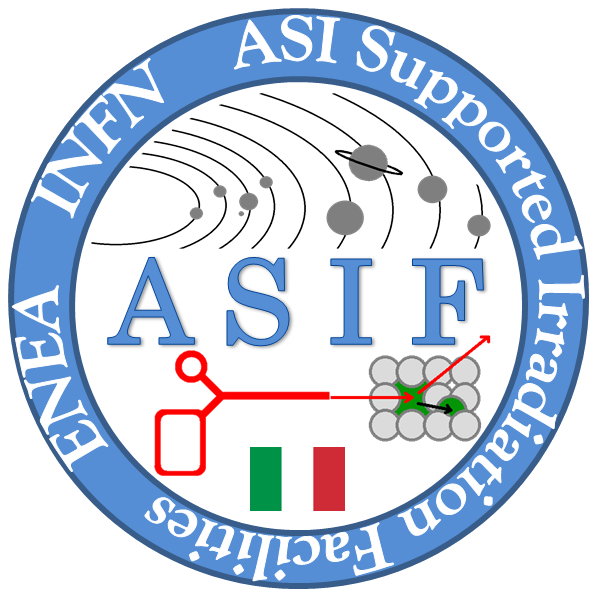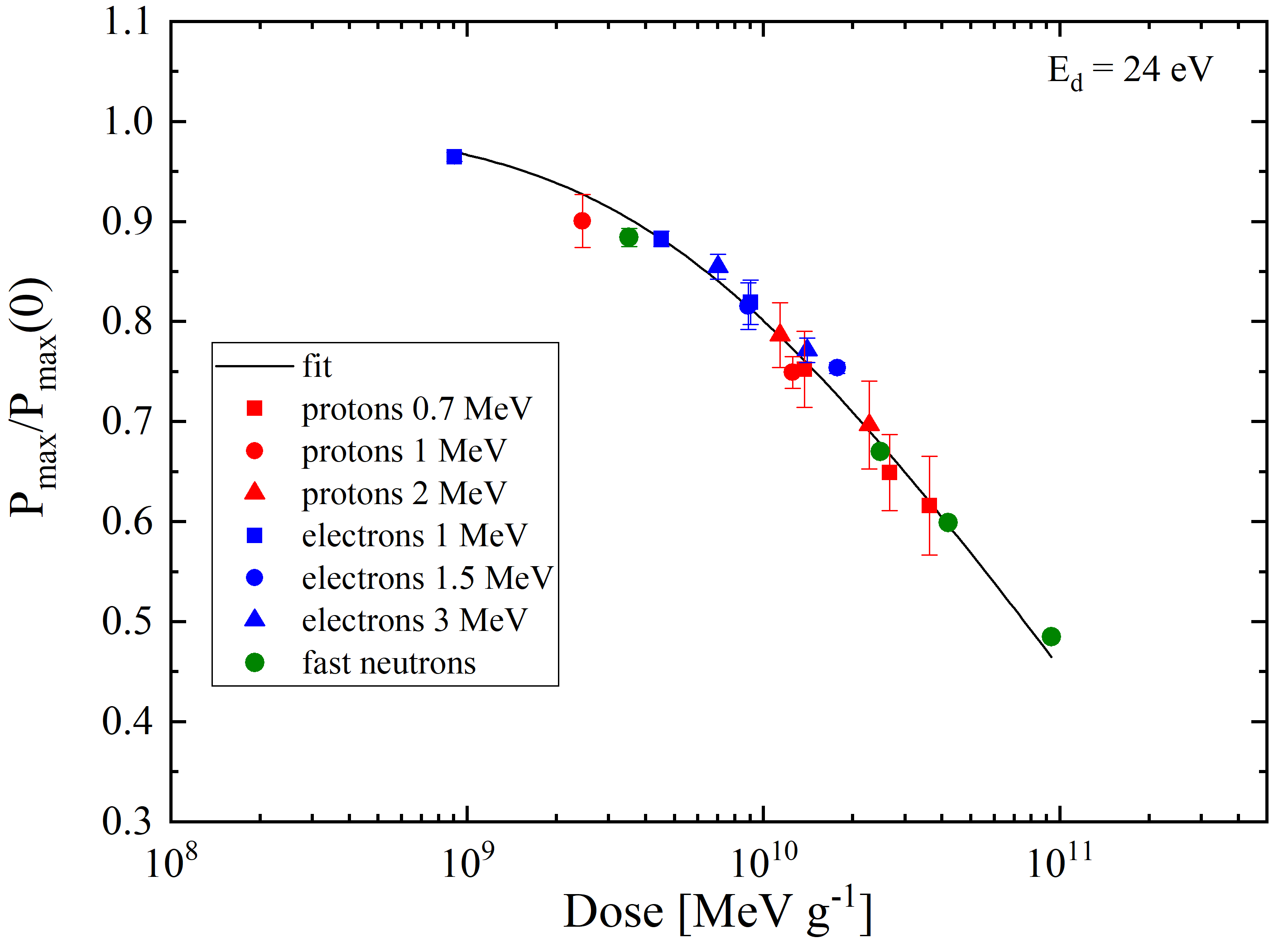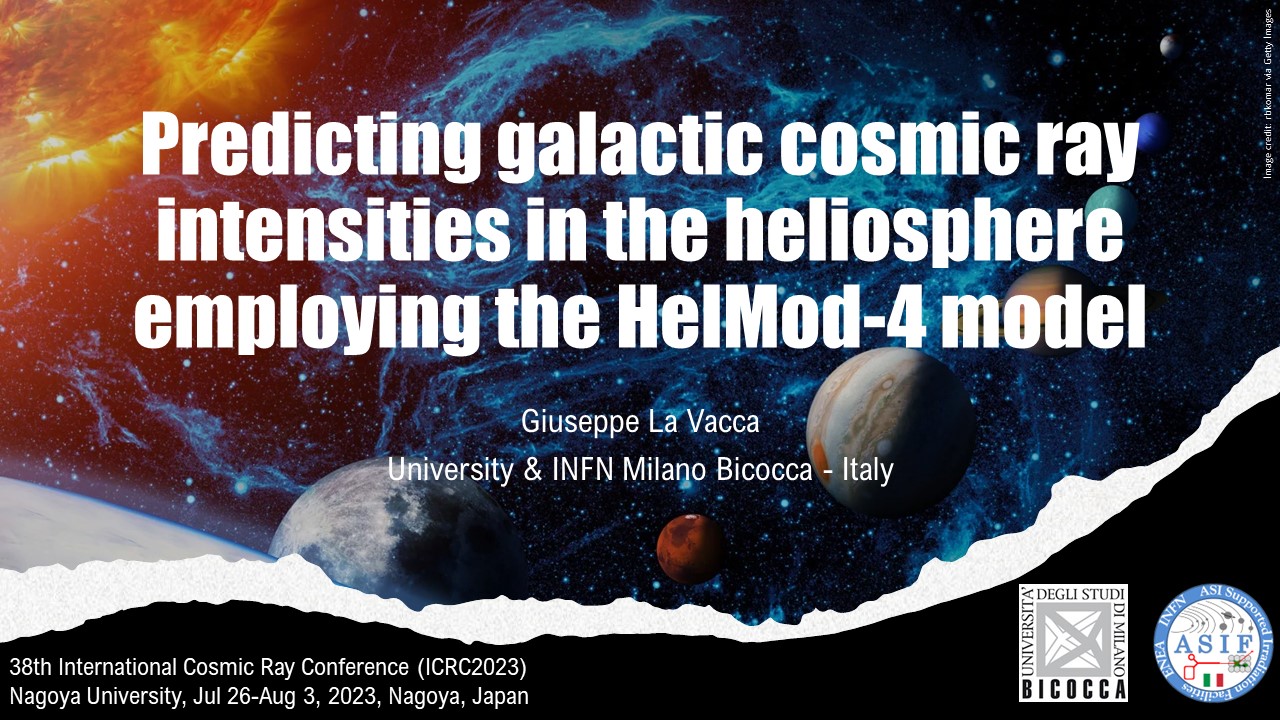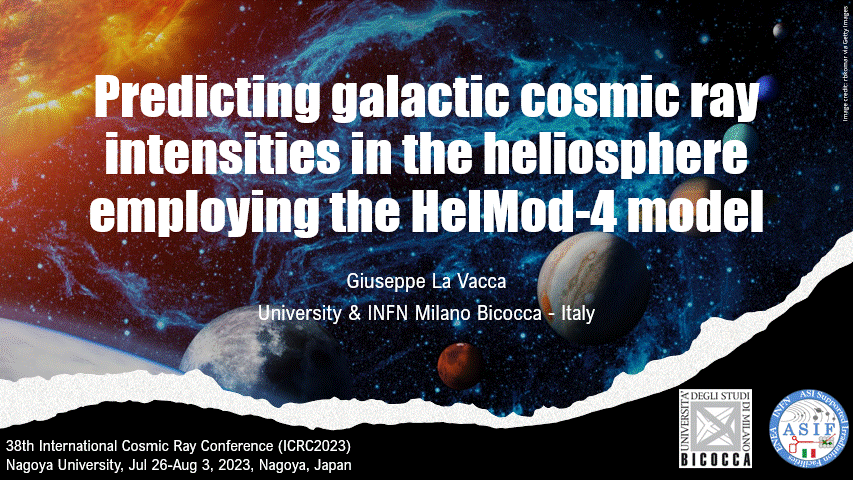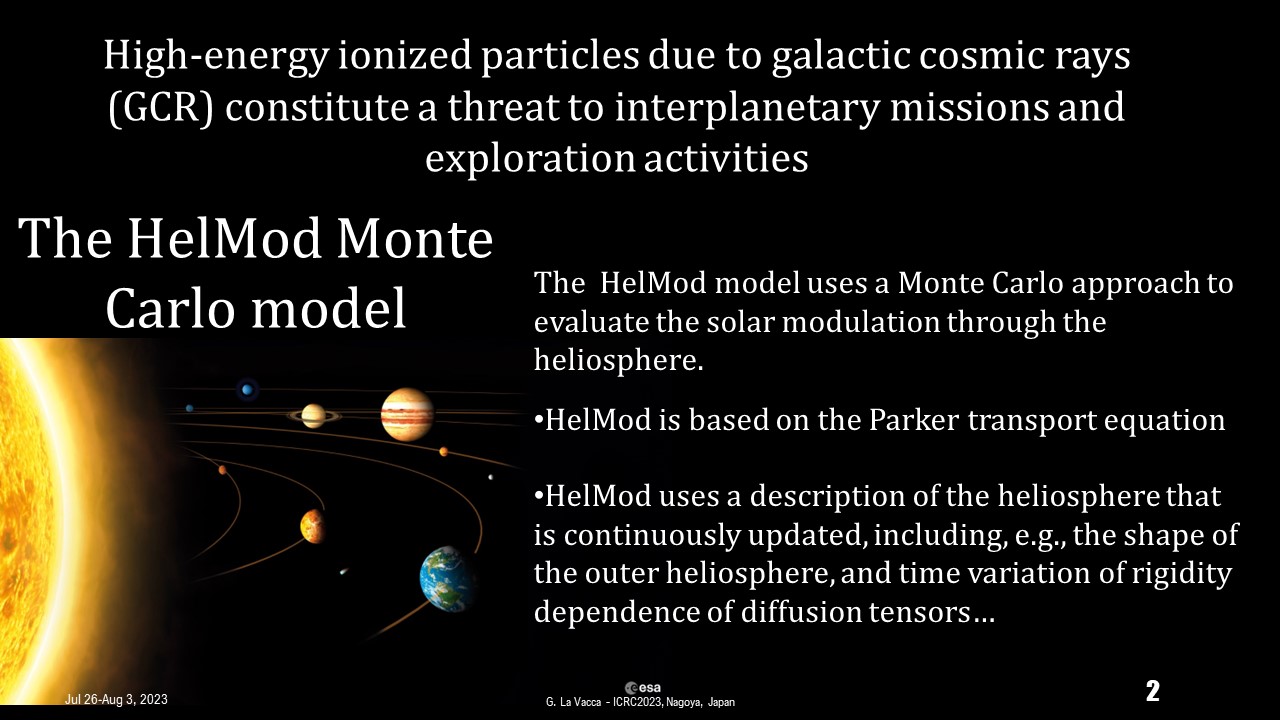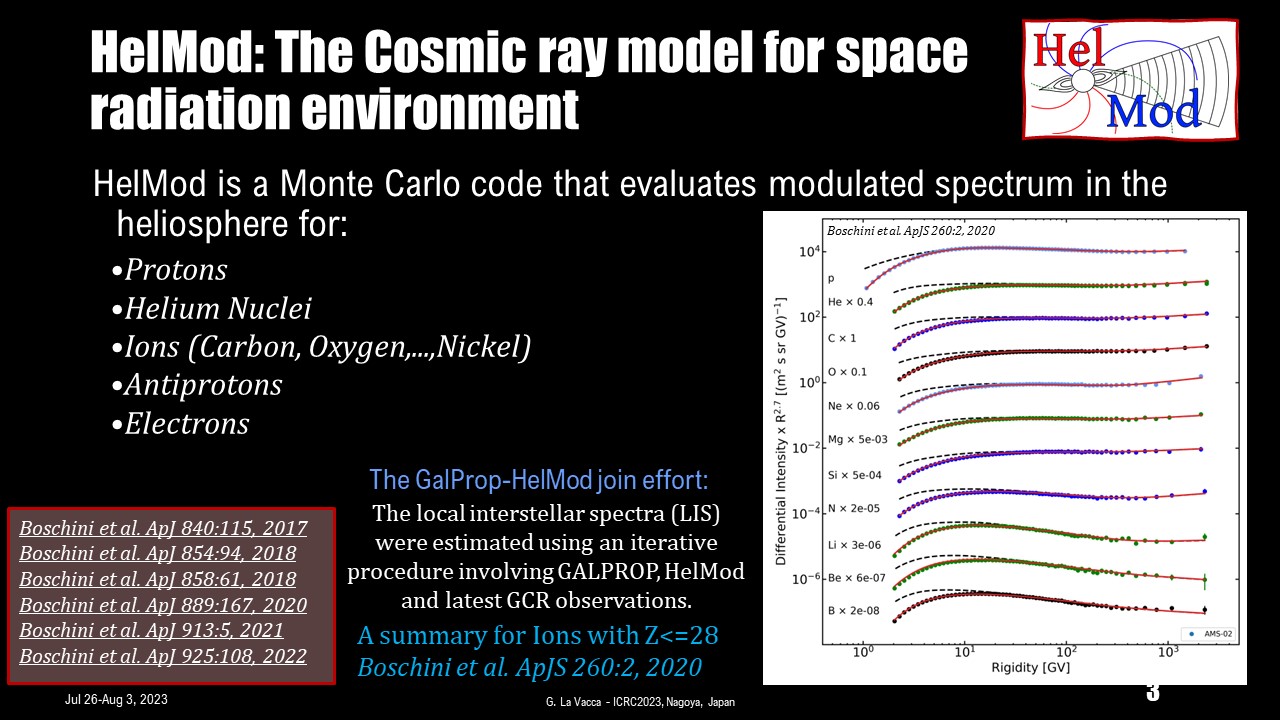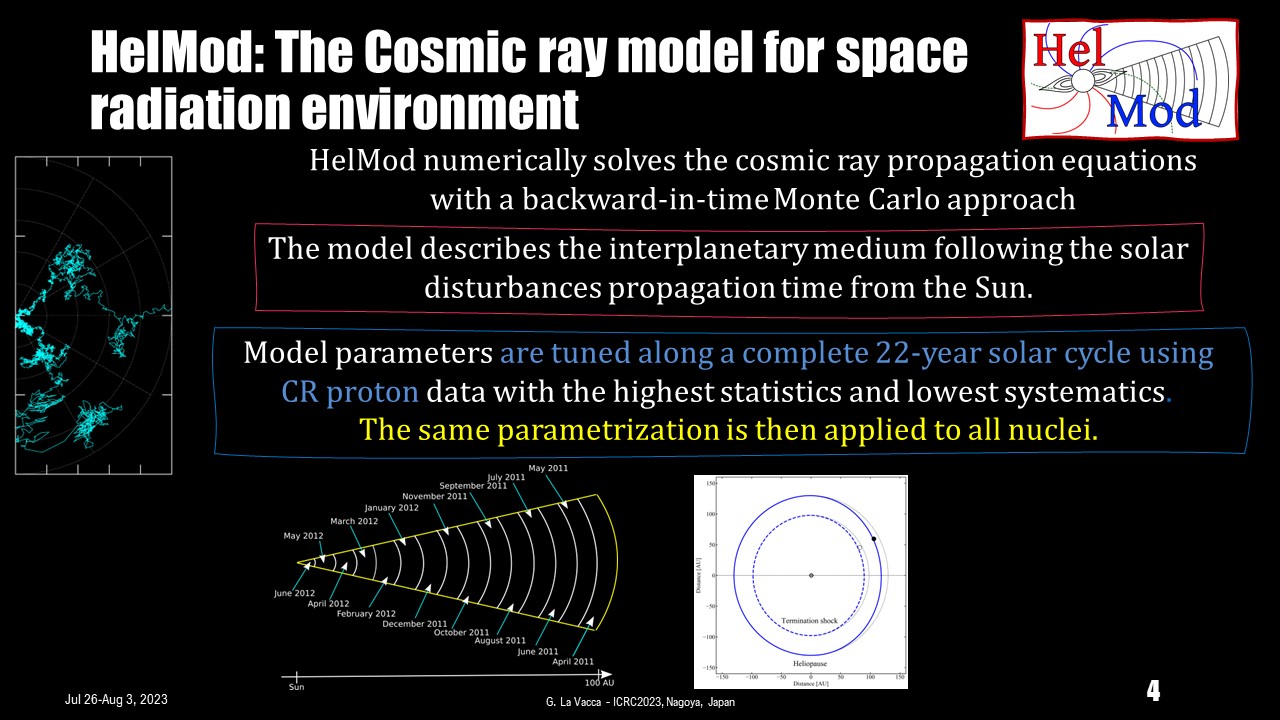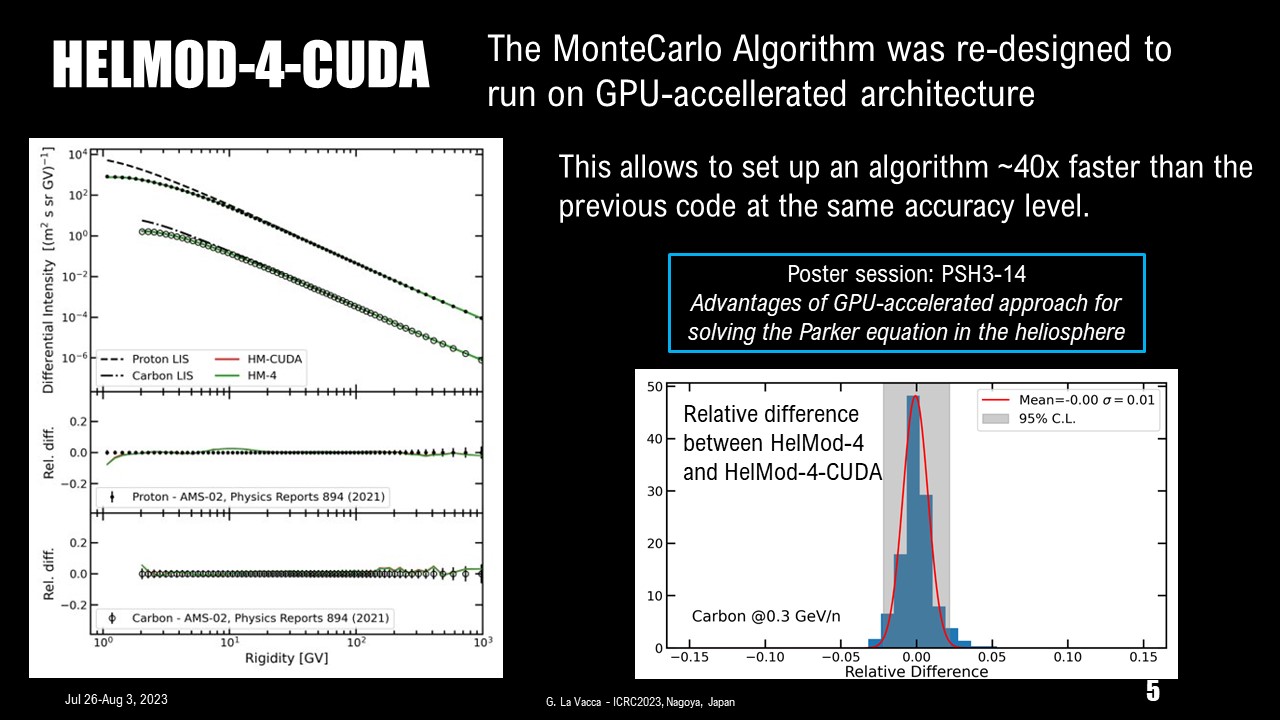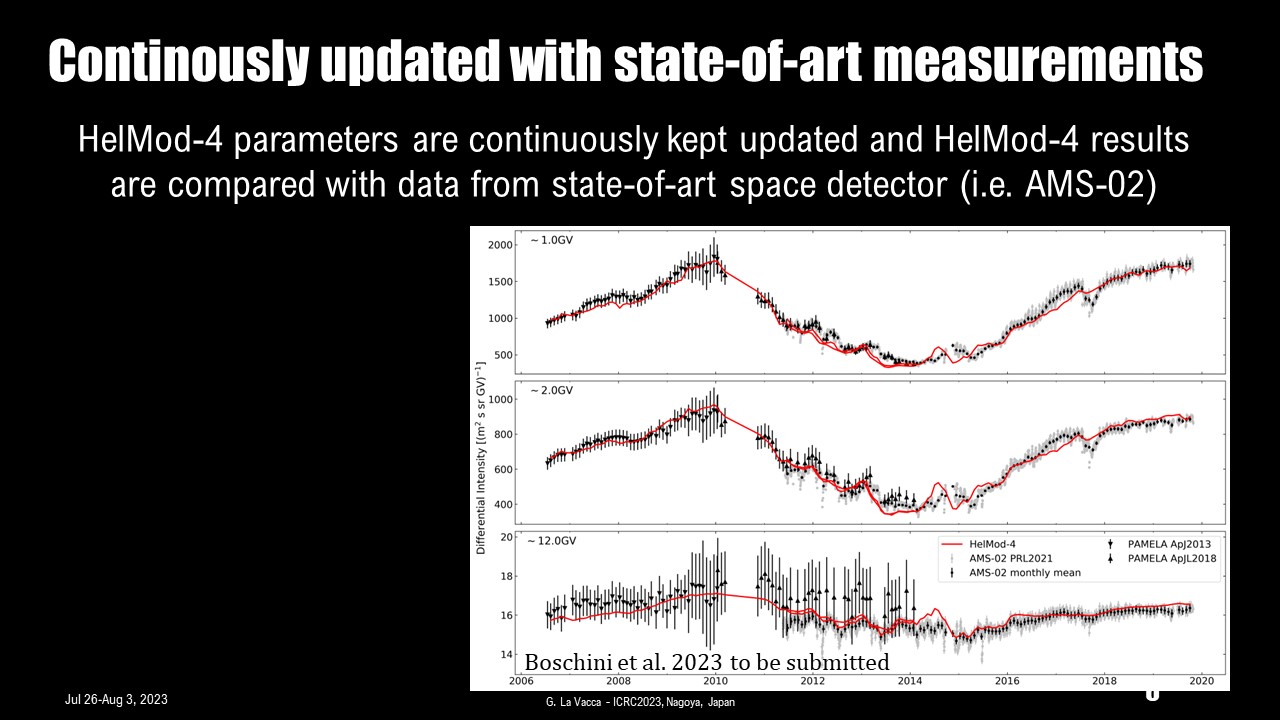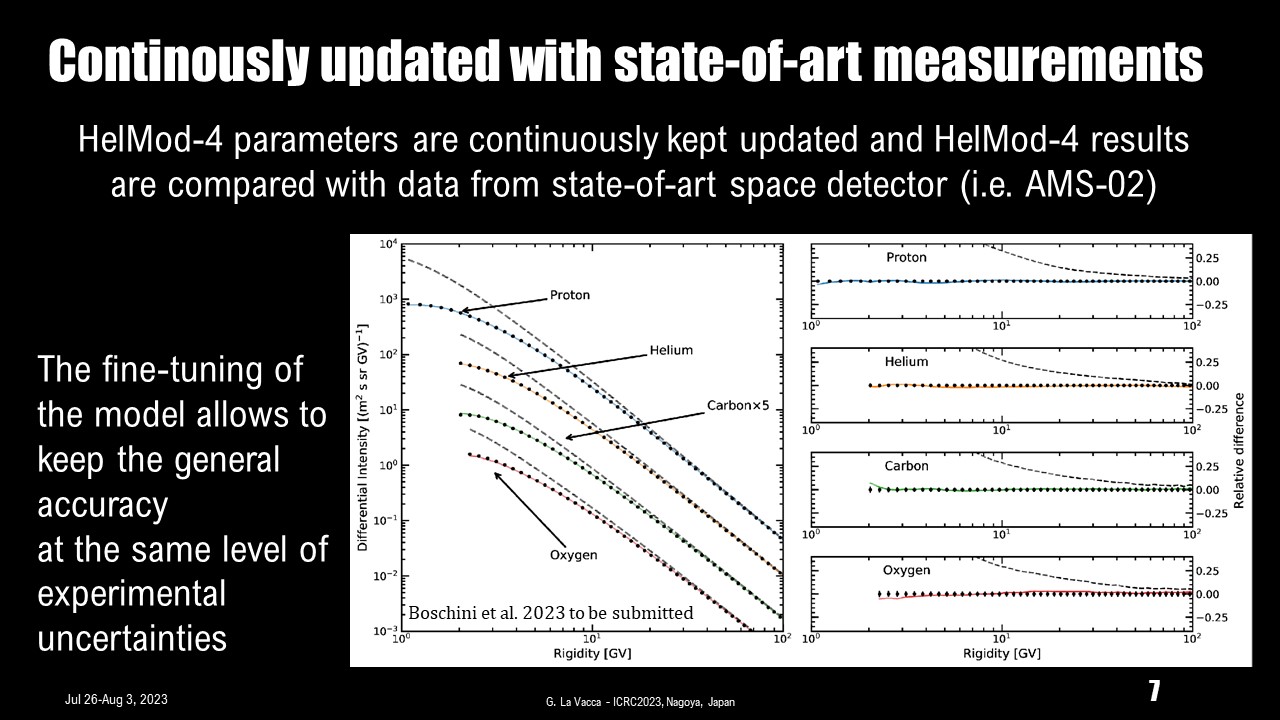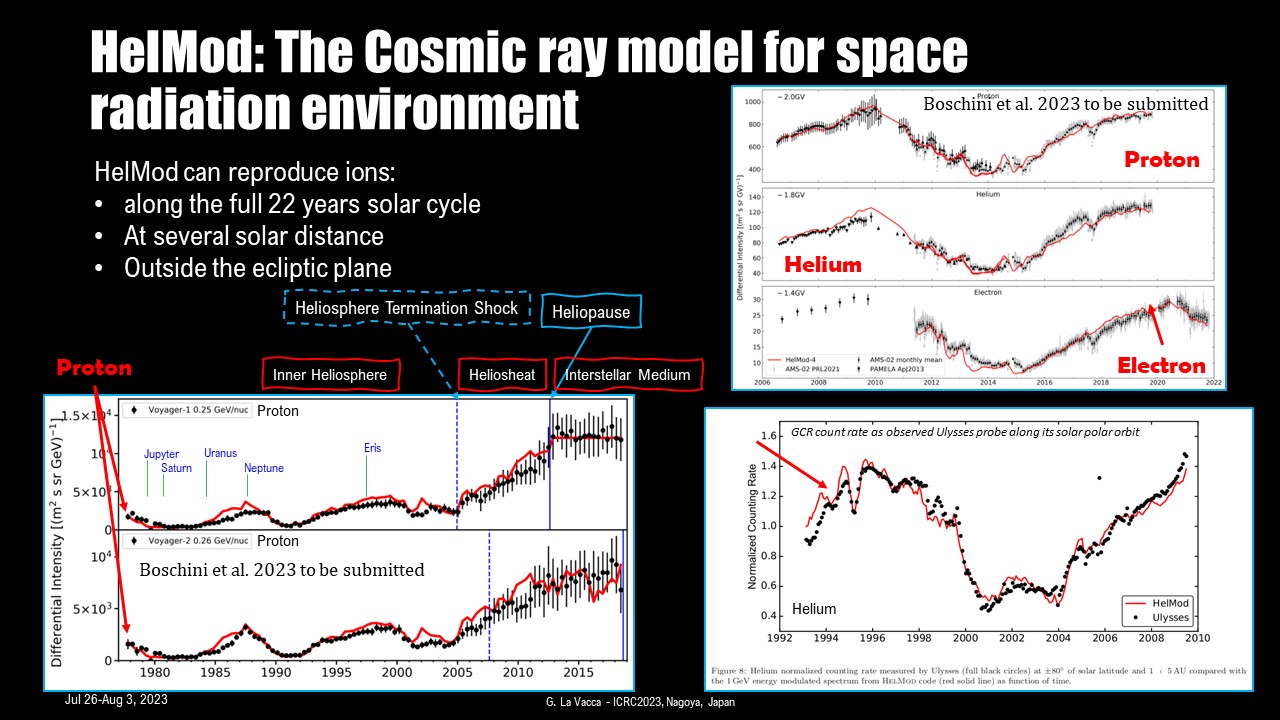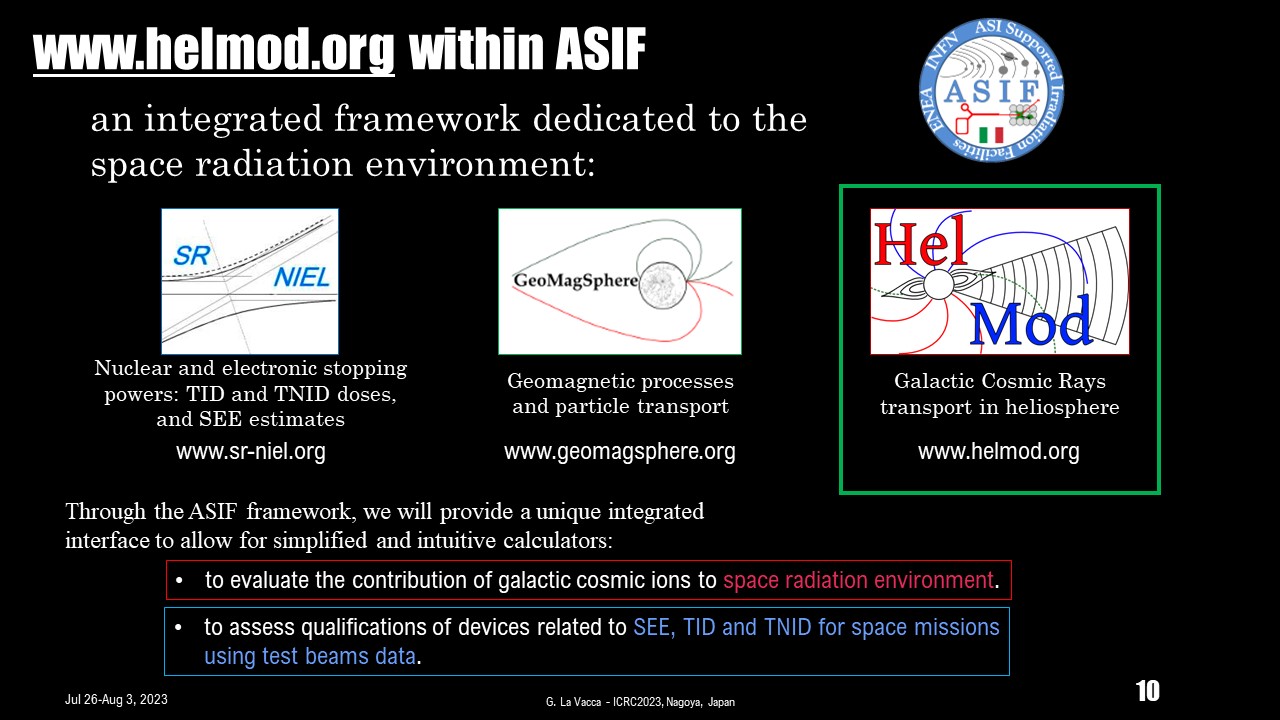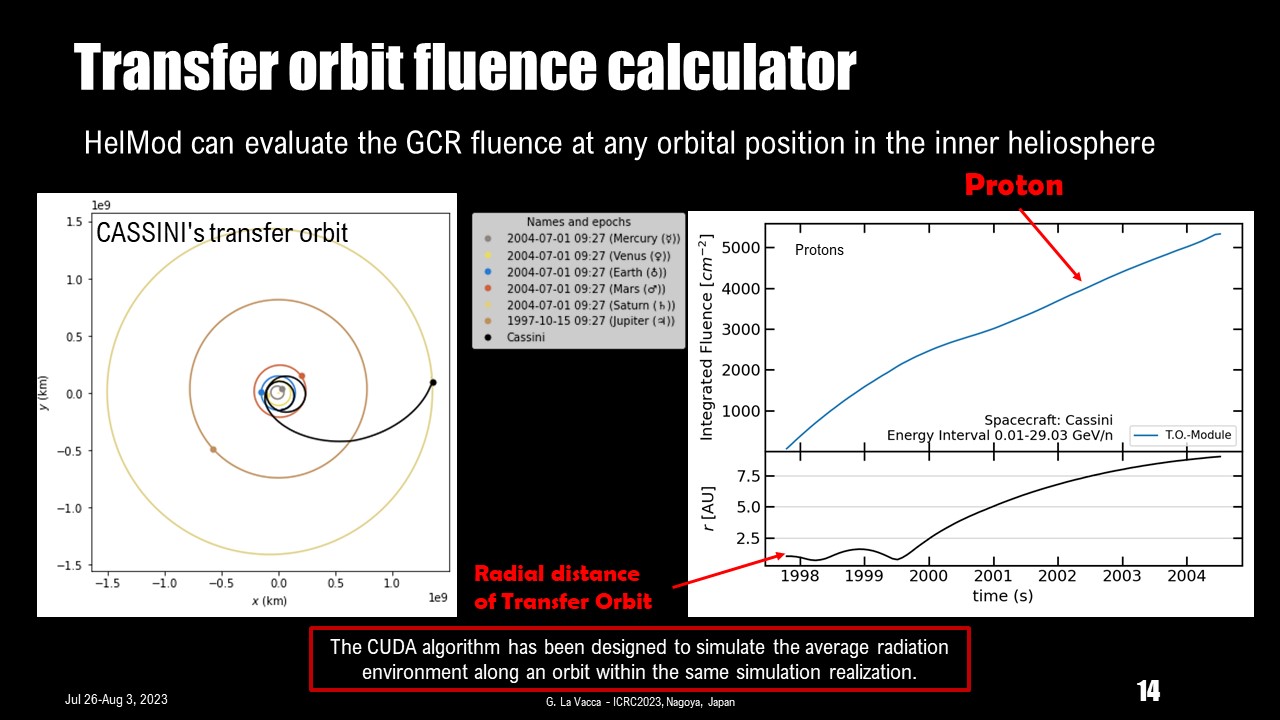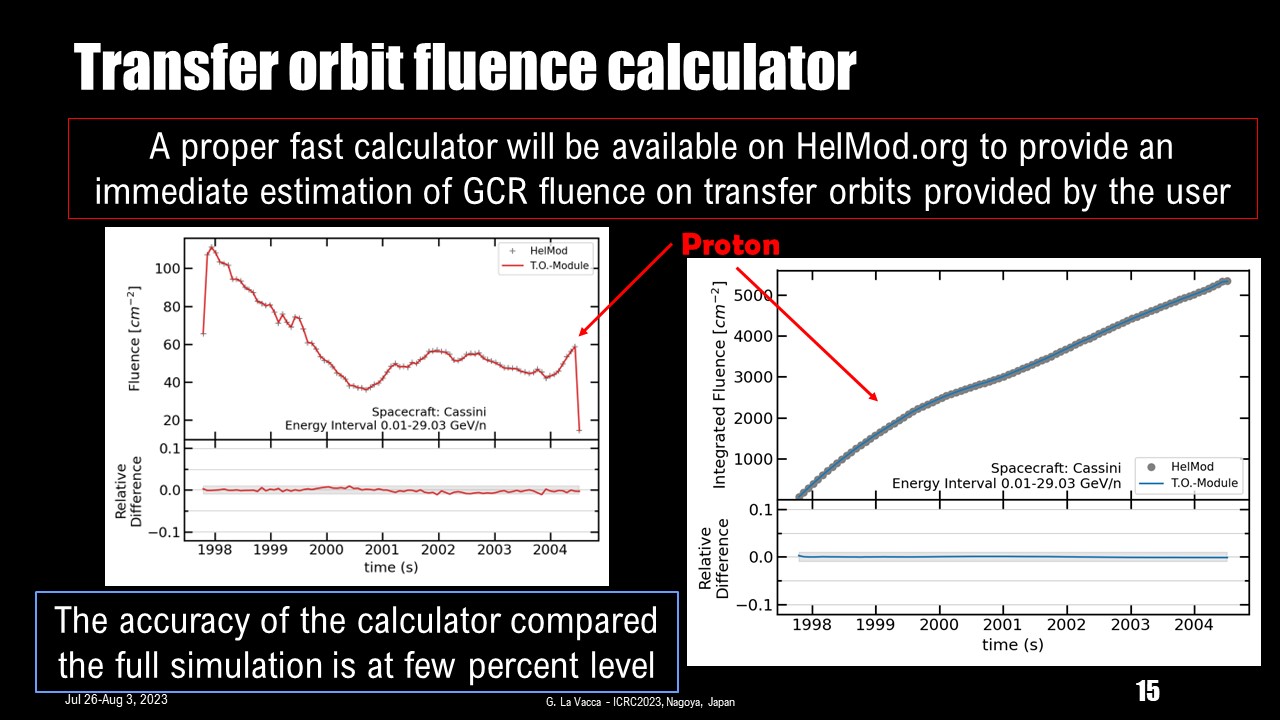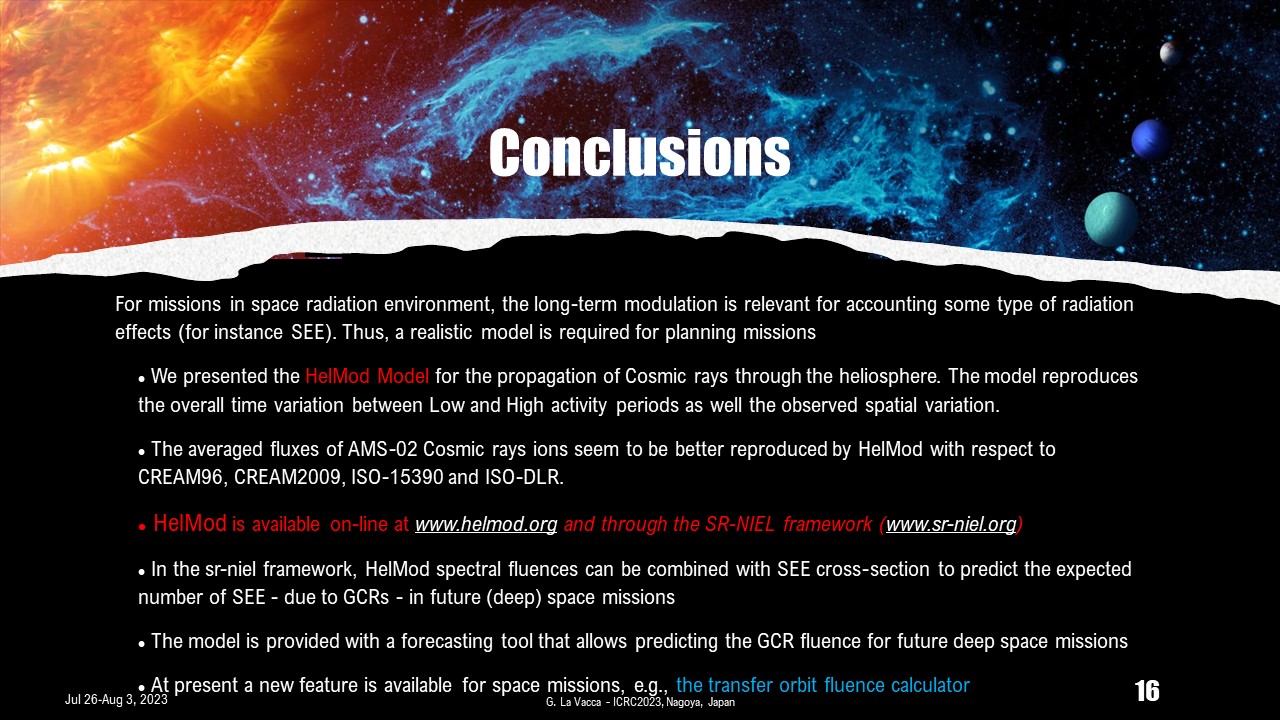In space radiation environment, Galactic Cosmic Rays (GCRs) are particularly hazardous to electronic components because their energies make them extremely penetrating, with a high rate of energy deposition. This makes GCRs an important contributor, for example, to single-event effects (SEE) especially in deep space missions [Boschini et al. (2023)]. Therefore, planning future missions should rely on a reliable description and forecast of the GCR component in order to properly assess radiation risk.
The joint effort from GALPROP and HelMod-4 provides a complete cross-tuned model framework that is validated using state-of-art GCR measurements in space, e.g., from AMS-02 and Voyagers. The GALPROP-HelMod-4 framework derived the Local Interstellar Spectra (LISs) for particles with the atomic number 𝑍 ≤ 28. In this way, the Model showed a better capability of reproducing high-precision data with respect to other solar modulation models commonly employed by the space community. HelMod-4 model includes a forecasting tool that is able to predict the GCR fluence for future space missions with uncertainty of ∼(5–15)% for prediction up to 11 years. More recently, the HelMod-4 algorithm has been ported to GPU architecture using the CUDA programming language [Della Torre et al. (2023), Boschini et al. (2024)], thus achieving significant speedup without losing in precision compared to the CPU implementation. Finally, for estimating SEE the model is available through an easy-to-use web interface and is embedded in the so-called SR-NIEL–7 framework.
Reference
M. Boschini et al., Predicting galactic cosmic ray intensities in the heliosphere employing the HelMod-4 model; Proc. of the 38th International Cosmic Ray Conference (ICRC2023) 26 July - 3 August (Nagoya, Japan), PoS (ICRC2023) Vol 444 (2023) page 1289 (1-8); doi: https://doi.org/10.22323/1.444.1289
M J Boschini, G Cavallotto, S Della Torre, M Gervasi, G La Vacca, P G Rancoita and M Tacconi, Fast and accurate evaluation of deep-space galactic cosmic ray fluxes with HelMod-4/CUDA, Advances in Space Research (in press), April 2024; https://doi.org/10.1016/j.asr.2024.04.021.
S. Della torre et al., Predicting galactic cosmic ray intensities in the heliosphere employing the HelMod-4 model; Proc. of the 38th International Cosmic Ray Conference (ICRC2023) 26 July - 3 August (Nagoya, Japan), PoS (ICRC2023) Vol 444 (2023) page 1290 (1-8); doi: https://doi.org/10.22323/1.444.1290
